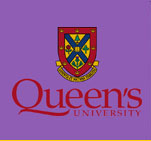|
|
|
  Keynote Speakers Keynote Speakers
|
|
Michael Arbib
University of Southern California
How Neural Computing Can Still be Unconventional After All These Years
  |
Attempts to
infer a technology from the computing style of the brain have often
focused on general learning styles, such as Hebbian learning,
supervised learning, and reinforcement learning. The present talk will
place such studies in a broader context based on the diversity of
structures in the mammalian brain -- not only does the cerebral cortex
have many regions with their own distinctive |
characteristics,
but their architecture differs drastically from that of basal ganglia,
cerebellum, hippocampus, etc. We will discuss all this within a
comparative, evolutionary context. The talk will make the case for a
brain-inspired computing architecture which complements the bottom-up
design of diverse styles of adaptive subsystems with a top-level design
which melds a variety of such subsystems to best match the capability
of the integrated system to the demands of a specific range of physical
or informational environments.
This talk will be a sequel to Arbib,
M.A., 2003, Towards a neurally-inspired computer
architecture, Natural computing, 2:1-46, but the
exposition will be self-contained. |
|
|
Lila Kari
University of Western Ontario
Nanocomputing
by Self-Assembly
  |
Biomolecular (DNA) computing is an
emergent field of unconventional computing, lying at the crossroads of
mathematics, computer science and molecular biology. The main
idea behind biomolecular computing is that data can be encoded in DNA
strands, and techniques from molecular biology can be used to perform
arithmetic and logic operations. The birth of this field was the 1994
breakthrough experiment of Len Adleman who solved a hard computational
problem solely by manipulating DNA strands in test-tubes. This led to
the possibility of envisaging a DNA computer that could
be thousand to
|
a million times faster, trillions times smaller
and thousand times more energy efficient than today's electronic
computers.
I will present one of the most active directions of research in DNA
computing, namely DNA nanocomputing by self-assembly. I will namely
discuss the computational potential of self-assembly, the process by
which objects autonomously come together to form
complex structures. I will bring forth evidence that self-assembly of
DNA molecules can be used to perform computational tasks. Lastly, I
will address the problem of self-assembly of arbitrarily large
super-shapes, its solution and implications. |
|
|
Roel Vertegaal
Queen's
University
Xuuk
Inc. / Human Media Lab,
Queen's University
Kingston, Canada
roel@xuuk.com
Organic
User Interfaces (Oui!): Designing Computers in Any
Way Shape or Form
 
|
Over the past few years, there has
been a quiet revolution in display
manufacturing technology. One that is only comparable in scope to that
of the invention of the first LCD, which led to DynaBook and the modern
laptop. E-ink electrophoretic pixel technology, combined with advances
in organic thin-film circuit substrates, have led to displays that are
so thin and flexible they are beginning to resemble paper. Soon
displays will completely mimic the high contrast, low power
consumption and flexibility of printed media. As
with the invention of
the first LCD, this
means we are |
on the
brink of a new paradigm in
computer user interface design: one in which computers can have any
organic form or shape. One where any object, no matter how complex,
dynamic or flexible its structure, may display information.
One where
the deformation of shape is a main source of input. This new paradigm
of Organic User Interface (Oui!) requires a new set of design
guidelines, which I will discuss in this presentation. These guidelines
were inspired by architecture, which went through a similar
transformation decades ago.
In Oui! The Input Device Is The Output Device (TIDISTOD), Form
dynamically follows Flow of activities of the human body, and Function
equals Form. I will give an overview of technologies that led to
Organic UI, such as Tangible UI and Digital Desks, after which I will
discuss some of the first real Oui! interfaces, which include Gummi and
PaperWindows. PaperWindows, which was developed at HML, is the first
real paper computer. It uses computer vision to track sheets of real
paper in real time. Page shape is modeled in 3D, textured with windows
and projected back onto the paper, making for a wireless hi-res
flexible color display. Interactions with PaperWindows take place
through hand gestures and paper folding techniques.
|
| |
|
|
Tal Mor
Technion
- Israel Institute of Technology
Algorithmic
Cooling: Putting a New Spin on the Identification of Molecules
 
|
In this talk I will present
"Algorithmic Cooling of
Spins", which is potentially the first near-future application of
quantum
computing devices. I will explain how straightforward quantum
algorithms
combined with novel entropy manipulations can result in a method to
improve the
identification of molecules. |
|
[extended
abstract] (pdf)
|
|
|
|



